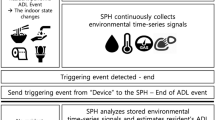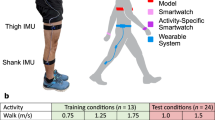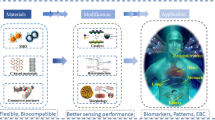Abstract
A wearable monitor that can reliably, accurately, and continuously measure personal exposure levels of various toxicants would not only accelerate the current environmental and occupational health and safety studies, but also enable new studies that are not possible with the current monitoring technology. Developing such a monitor has been a difficult challenge, and requires innovative sensing science and creative engineering. We have developed, built, and tested a wearable monitor for real-time detection of toxic hydrocarbons and acids in the environment. The monitor is low-cost, accurate, and user friendly. In addition, it can communicate wirelessly with a cell phone in which the monitoring results can be processed, displayed, stored, and transmitted to a designated computer. We have validated the functions and performance of the monitor, and carried out field tests with workers involving waste management, fire overhaul, and floor-cleaning activities, as well as with first- and second-hand smokers. The averaged exposure levels are in agreement with those determined by the standard NIOSH methods. The monitor provides accurate and real-time exposure assessment for the workers involving different activities. The real-time and continuous monitoring capability makes it possible to correlate the exposure levels with different activities and changes in the microenvironments. The monitor provides unprecedented real-time information that will help advance occupational safety and environmental health studies. It may also be used to better protect workers from occupational overexposure to toxic molecules.
This is a preview of subscription content, access via your institution
Access options
Subscribe to this journal
Receive 6 print issues and online access
$259.00 per year
only $43.17 per issue
Buy this article
- Purchase on Springer Link
- Instant access to full article PDF
Prices may be subject to local taxes which are calculated during checkout







Similar content being viewed by others
References
Bolstad-Johnson D.M., and Burgess J.L., et al. Characterization of firefighter exposures during fire overhaul. AIHAJ 2000: 61 (5): 636–641.
Brown S.G., and Frankel A., et al. Source apportionment of VOCs in the Los Angeles area using positive matrix factorization. Atmos Environ 2007: 41 (2): 227–237.
Burgess J.L., and Crittenden J.C. Tucson firefighter exposure to products of combustion; a risk assessment. Appl Occup Environ Hyg 1995: 10: 37–42.
Burgess J.L., and Nanson C.J., et al. Adverse respiratory effects following overhaul in firefighters. J Occup Environ Med 2001: 43 (5): 467–473.
Carrieri M., and Tranfo G., et al. Correlation between environmental and biological monitoring of exposure to benzene in petrochemical industry operators. Toxicol Lett 2010: 192 (1): 17–21.
Chambers D.M., and Blount B.C., et al. Picogram measurement of volatile n-alkanes (n-hexane through n-dodecane) in blood using solid-phase microextraction to assess nonoccupational petroleum-based fuel exposure. Anal Chem 2008: 80 (12): 4666–4674.
Gaertner R.R.W., and Theriault G.P. Risk of bladder cancer in foundry workers: a meta-analysis. Occup Environ Med 2002: 59 (10): 655–663.
Hatzinikolaou D.G., and Lagesson V., et al. Analysis of the gas phase of cigarette smoke by gas chromatography coupled with UV-diode array detection. Anal Chem 2006: 78 (13): 4509–4516.
Je C.H., and Stone R., et al. Development and application of a multi-channel monitoring system for near real-time VOC measurement in a hazardous waste management facility. Sci Total Environ 2007: 382 (2–3): 364–374.
Jo W.K., and Yu C.H. Public bus and taxicab drivers’ exposure to aromatic work-time volatile organic compounds. Environ Res 2001: 86 (1): 66–72.
LeMasters G.K., and Genaidy A.M., et al. Cancer risk among firefighters: a review and meta-analysis of 32 studies. J Occup Environ Med 2006: 48 (11): 1189–1202.
Leong S.T., and Laortanakul P. Benzene and lead exposure assessment among occupational bus drivers in Bangkok traffic. J Environ Sci (China) 2004: 16 (1): 61–66.
McConnell R. Asthma and traffic-related exposure at schools, homes and on roadways. Epidemiology 2008: 19 (6): S58.
Mustajbegovi J., and Zuskin E., et al. Respiratory function in active firefighters. Am J Ind Med 2001: 40 (1): 55–62.
NIOSH1005. http://www.cdc.gov/niosh/docs/2003-154/pdfs/1005.pdf.
NIOSH7903. http://cdc.gov/niosh/docs/2003-154/pdfs/7903.pdf.
NIOSH-NORA. http://www.cdc.gov/niosh/NORA/about.html.
Obadia M., and Liss G.M., et al. Relationships between asthma and work exposures among non-domestic cleaners in Ontario. Am J Ind Med 2009: 52 (9): 716–723.
Parrish M.E., and Lyons-Hart J.L., et al. Puff-by-puff and intrapuff analysis of cigarette smoke using infrared spectroscopy. Vib Spectrosc 2001: 27 (1): 29–42.
Ribeiro M., and Santos U.D., et al. Prevalence and risk of asthma symptoms among firefighters in Sao Paulo, Brazil: a population-based study. Am J Ind Med 2009: 52 (3): 261–269.
Sleiman M., and Gundel L.A., et al. Formation of carcinogens indoors by surface-mediated reactions of nicotine with nitrous acid, leading to potential thirdhand smoke hazards. PNAS 2010: 107 (15): 6576–6581.
Xu F., and McGlotin J. Video exposure assessments of solvent exposures in university pharmaceutical laboratories—a pilot study. Chem Heal Saf 2003: 10: 23–28.
Acknowledgements
This project was supported by NIEH/NIH (#5U01ES016064) through the Genes, Environment and Health Initiative (GEI) program. We are deeply thankful to collaborators Jay A Gandolfi and Jeff Burgess at University of Arizona, Dawn Bolstad-Johnson, Willie Nelson, and Jack Ballentine at Phoenix Fire Department, Christopher Knobbe at Arizona OSHA, who have contributed to this work with suggestions and ideas about the different scenarios to be tested and/or actual field testing. We also appreciate help from Tom Colella at Goldwater Environmental Laboratory, ASU, and John Lemanski, Michael Ochs, and Henry Walsh at Department of EHS, ASU for validation studies of the monitor, and the cooperation from Jeffrey Bender, Stephen Scheufler, Jason Neal, and John Rodriguez at the Hazardous Waste Management Facility, ASU.
Author information
Authors and Affiliations
Corresponding authors
Ethics declarations
Competing interests
The authors declare no conflict of interest.
Additional information
Supplementary Information accompanies the paper on the Journal of Exposure Science and Environmental Epidemiology website
Supplementary information
Rights and permissions
About this article
Cite this article
Negi, I., Tsow, F., Tanwar, K. et al. Novel monitor paradigm for real-time exposure assessment. J Expo Sci Environ Epidemiol 21, 419–426 (2011). https://doi.org/10.1038/jes.2010.35
Received:
Accepted:
Published:
Issue Date:
DOI: https://doi.org/10.1038/jes.2010.35
Keywords
This article is cited by
-
Simulation of average energy expenditures and related inhalation rates for the U.S. population
Air Quality, Atmosphere & Health (2013)



